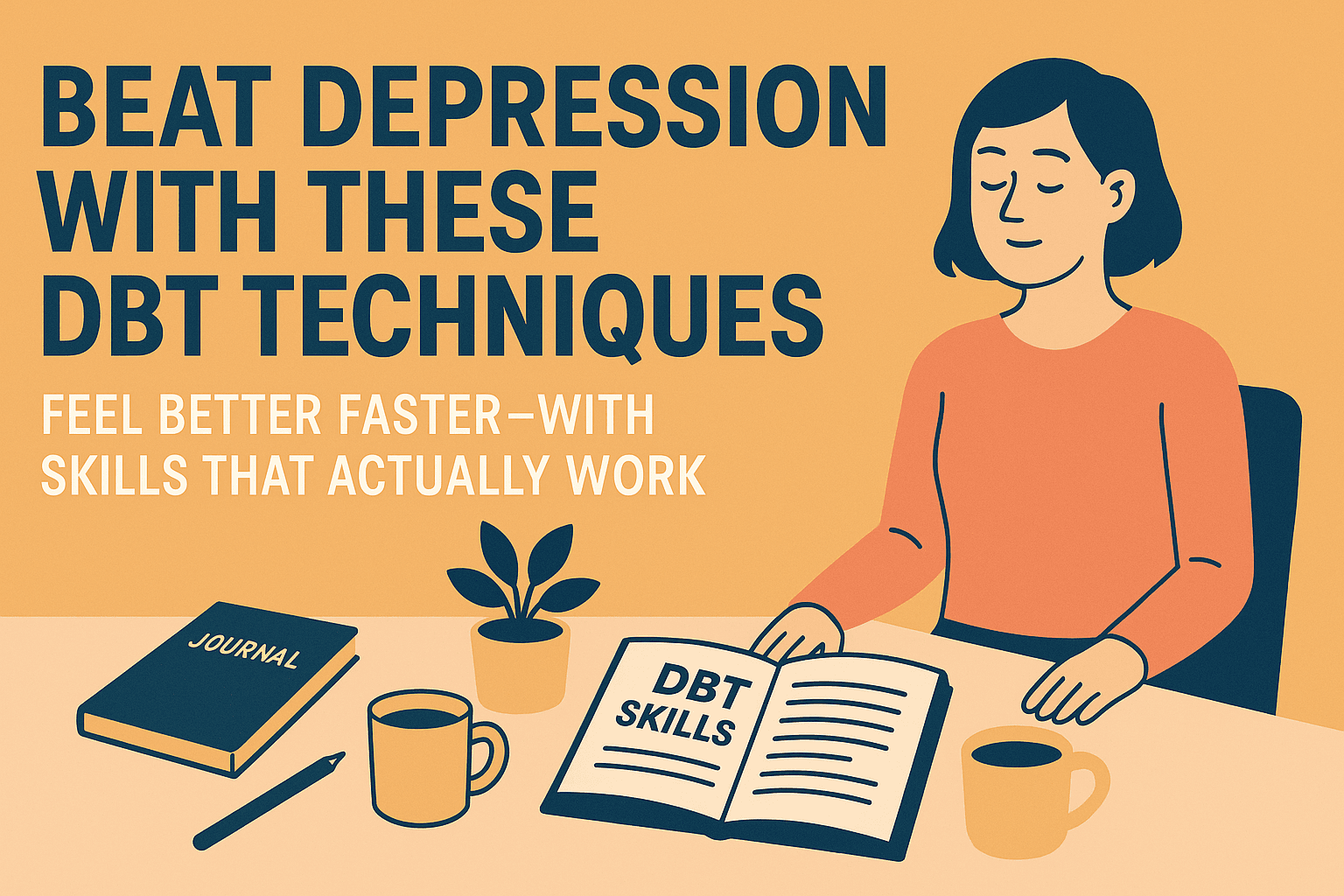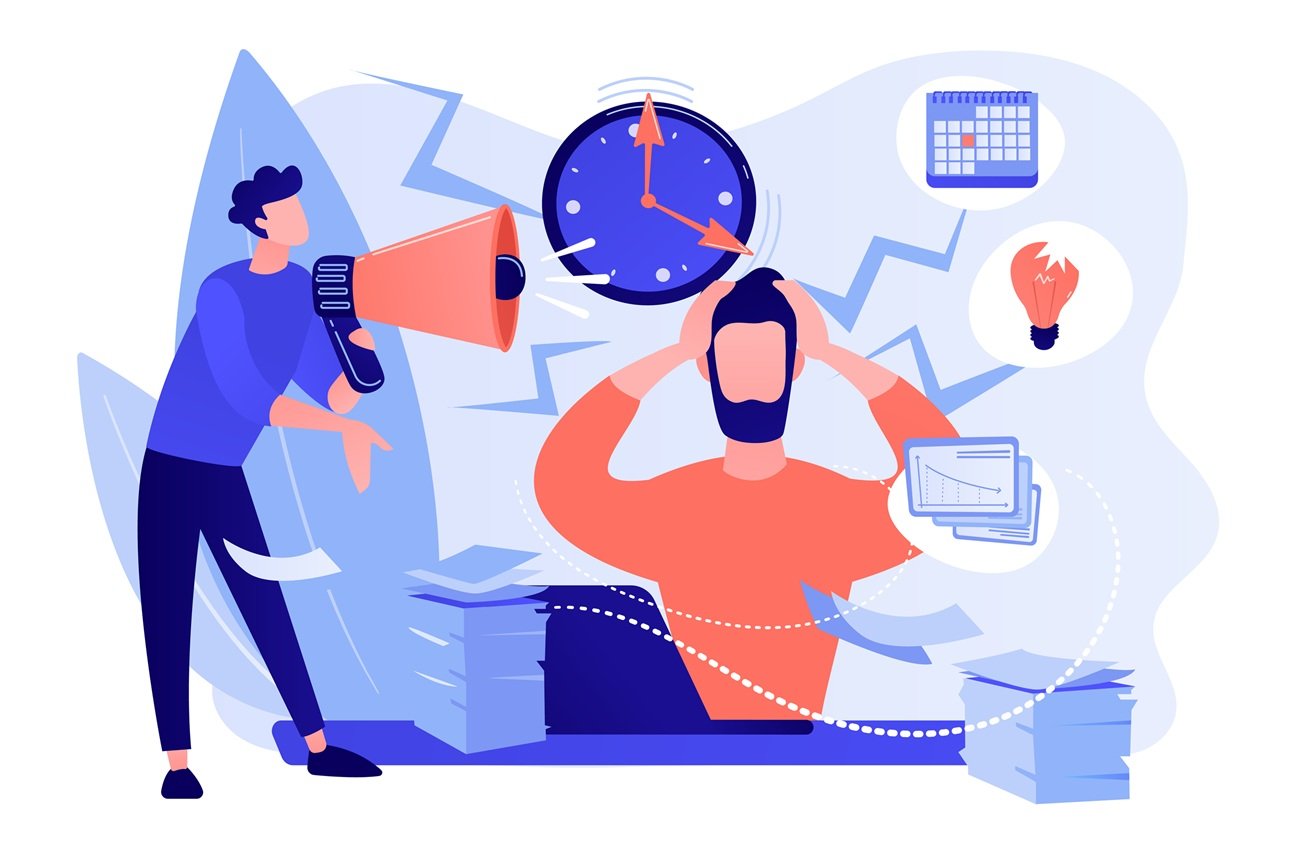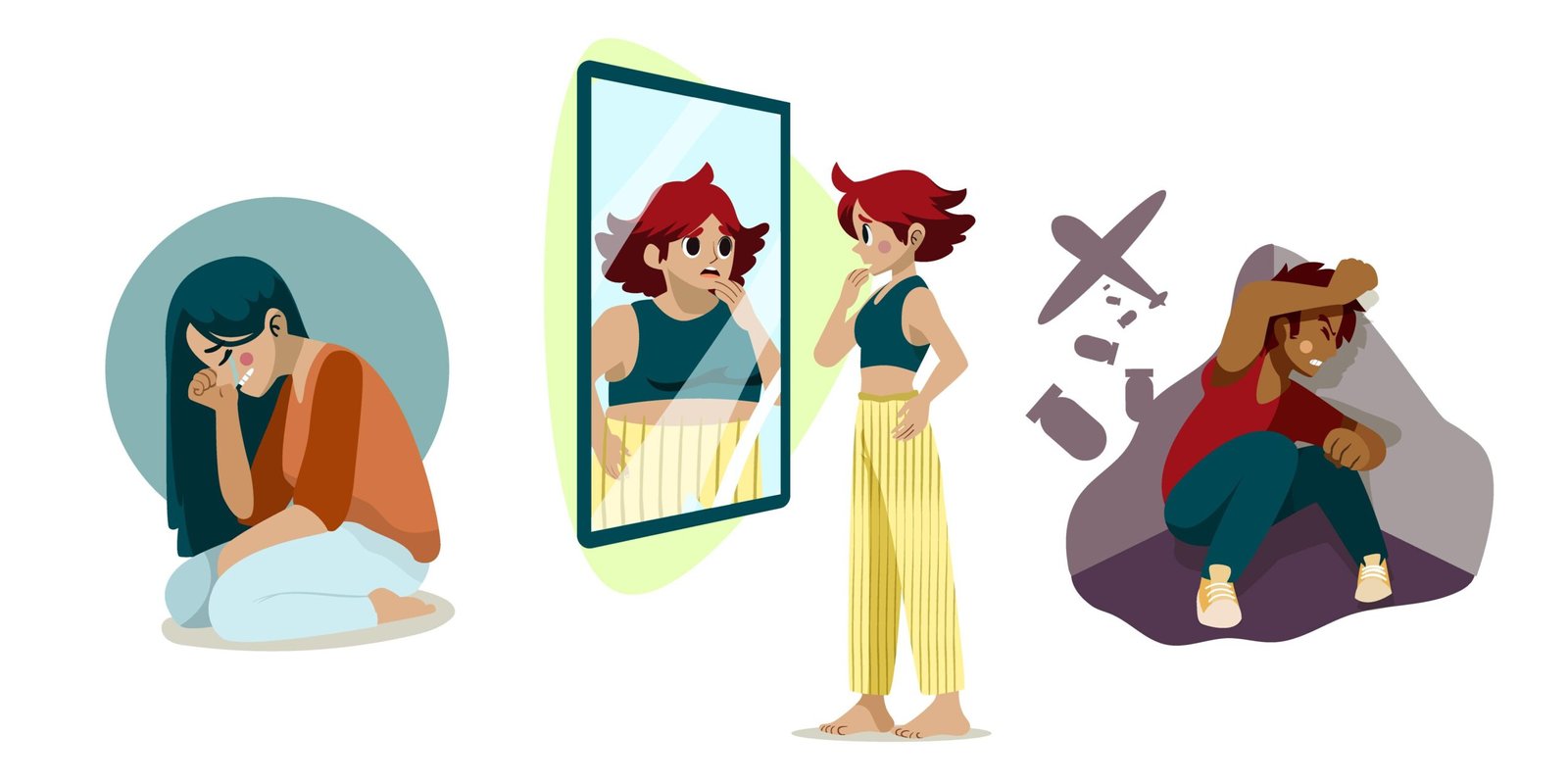Feel better faster—with skills that actually work
Let’s cut to the chase: if you’re dealing with depression, you probably don’t want to talk about it—you want to feel better. You want the heavy weight to lift. You want the fog to clear. You want energy, hope, joy… even just a sense of normal again.
The good news? You don’t have to wait months or years to see change. You can start feeling better in days—with the right tools.
Enter: Dialectical Behavior Therapy (DBT). Originally created for people experiencing extreme emotional dysregulation, DBT has proven to be one of the most effective frameworks for managing depression—especially when nothing else seems to work.
If you’re feeling stuck, unmotivated, or emotionally drained, keep reading. These DBT techniques could help you unlock momentum, emotional clarity, and yes—even hope—faster than you think.
Why DBT Works for Depression
Depression isn’t just sadness. It’s:
- Exhaustion that sleep doesn’t fix
- Feeling numb when you should feel something
- Guilt over things you didn’t do
- Hopelessness that makes everything feel pointless
Most of all, it’s disconnection—from yourself, your body, your values, your life.
That’s where DBT comes in.
While Cognitive Behavioral Therapy (CBT) focuses on changing thoughts, DBT focuses on changing your relationship with emotion itself—which is crucial for depression, where motivation and regulation are often hijacked by low mood and energy.
DBT combines four core skill sets:
- Mindfulness – awareness of your internal and external world
- Distress Tolerance – surviving emotional pain without making it worse
- Emotion Regulation – reducing emotional vulnerability and reactivity
- Interpersonal Effectiveness – building supportive relationships
📘 Want the full breakdown? Start with DBT Explained by Suzette Bray for a plain-language guide to how these life-changing skills work.
But Can DBT Really Help My Depression?
Yes—and here’s why.
DBT isn’t just about calming down. It’s about building a life that feels worth living—even in the middle of hard emotions. DBT doesn’t ask you to feel better right away. It helps you take small, skillful steps toward relief, clarity, and connection.
If you’ve ever said:
- “I know what I should do, but I can’t make myself do it.”
- “I feel numb, stuck, and disconnected.”
- “I don’t even know what I feel anymore.”
…then DBT isn’t just helpful—it’s essential.
📘 For an even more accessible guide, try DBT For Dummies by Gillian Galen & Blaise Aguirre—a great, down-to-earth intro to mindfulness, distress tolerance, and emotional resilience.
Let’s Get to It: DBT Techniques That Help Depression—Fast
Here are the five most impactful DBT techniques to start using right now.
🌱 1. Opposite Action
What It Is: Doing the opposite of what your depressive urge tells you to do.
If depression tells you to isolate, you text a friend.
If it tells you to stay in bed, you sit up and stretch.
If it says, “This won’t matter,” you do it anyway.
This isn’t “fake it ‘til you make it.” It’s act your way into feeling, not the other way around.
💡 Start small: Take a 5-minute walk. Play one upbeat song. Sit outside. Move one thing off your to-do list. That momentum? It builds.
🔥 2. Behavioral Activation
What It Is: A form of structured activity scheduling that interrupts the depression cycle.
Depression says, “Do nothing.” You respond with, “Do one thing.”
That one action—however small—gives you a spark of purpose. And action leads to energy, not the other way around.
🧠 Tip: Choose values-based actions, not “shoulds.” Instead of cleaning your entire kitchen, maybe you water your plant or journal one page.
📥 Want structured help? Download my Emotional Regulation Starter Kit – FREE. It includes grounding exercises and emotion-based strategies that can jump-start change.
🧘 3. Mindfulness for Mood Awareness
What It Is: Tuning in to what you feel without judgment or resistance.
Depression can numb you out or trap you in a spiral. Mindfulness brings you back to the present, where you can respond rather than react—or shut down.
Try this:
- Notice one sound, one sensation, one breath
- Say to yourself: “This is what I’m feeling. I don’t have to fix it right now.”
- Observe without solving
When you stop resisting your experience, you reduce its grip.
📘 My Mindfulness Workbook includes simple, low-effort practices you can do even when you’re feeling drained or low.
🚨 4. Distress Tolerance for Emotional Survival
What It Is: Crisis survival tools for when depression hits hard.
This is your “keep me safe until this passes” toolkit. DBT helps you stay afloat without resorting to self-harm, numbing behaviors, or complete shutdown.
Try this:
- Cold water splash on your face
- Hold ice or use a cold pack
- Listen to brown noise or calming soundscapes
- Soothe yourself through sight, scent, and touch
These aren’t cures—they’re anchors.
Use them when the storm hits. You don’t need to solve your entire life—you just need to get through the next 10 minutes.
🧠 Combine this with a strategy from the starter kit or use your grounding skills toolbox.
💬 5. Check the Facts
What It Is: A DBT cognitive tool that helps you reframe unhelpful thoughts.
Depression loves to lie. It says, “No one cares,” “You’ll never feel better,” “You’re a failure.”
Checking the facts helps you:
- Look at what’s really true
- Challenge the extreme thought
- Replace it with a more balanced one
For example:
Thought: “I’m a burden.”
Check the facts: “I’m struggling right now, but I’ve shown up for others. They’ve told me they care. My brain is in pain—not telling the truth.”
When you’re depressed, your brain needs your compassion more than your criticism.
You Don’t Need to Be “Motivated” to Start
Here’s a secret we never say loudly enough:
You don’t have to feel ready. You just have to begin.
Start with one skill. One page of a workbook. One mindful breath.
The shift will come—not all at once, but in real ways that you will notice.
Ready to Try DBT with a Therapist?
🟣 If you’re in Arizona or California, I offer DBT-informed therapy and coaching to help you move through depression with skills, structure, and support.
Note: This is not a full DBT program, but a personalized, flexible therapy experience grounded in the most effective DBT tools.
🟣 Not in AZ or CA? Try Online-Therapy.com—you’ll get weekly sessions, customized worksheets, journaling, and on-demand therapist messaging.
✨ Use code THERAPY20 to get 20% off your first month
Let’s Recap: Your DBT Depression Toolkit
| Skill | Tool | Link |
| DBT Overview | DBT Explained, DBT For Dummies | Learn what DBT is and how to apply it to low mood |
| Mindfulness | Mindfulness Workbook | Awareness practices to reduce shutdown and numbness |
| Emotion Rescue | Emotional Regulation Starter Kit – Free | Tools to calm your nervous system in real-time |
| Action Plans | Opposite Action, Behavioral Activation | Do the opposite of your depressive urge to shift momentum |
| Thought Reframes | Check the Facts | Replace hopeless, distorted thinking with something more grounded |
Final Thoughts: You Are Not Broken—You’re Exhausted
Depression is not laziness. It’s not failure. It’s not weakness.
It’s your body and brain saying: “Something needs to change.”
With DBT, you don’t have to change everything overnight. You just need the right tools, the right support, and a small daily practice of showing up for yourself.
Healing won’t be linear. But it will be possible. 💜









